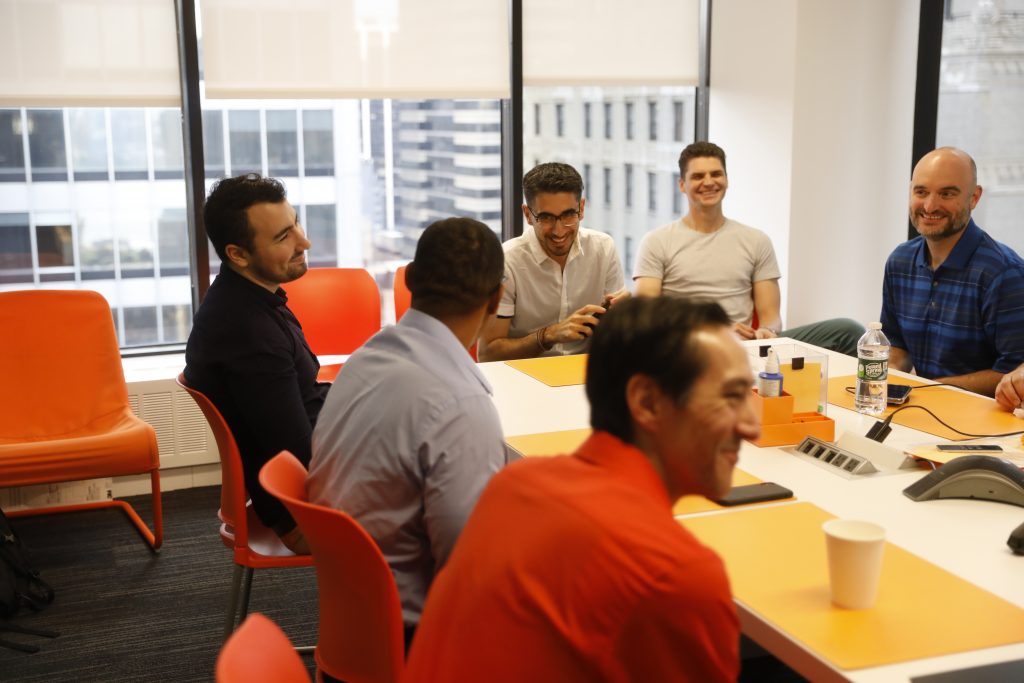
It wasn’t that long ago that suits, ties, knee-length skirts, heels and pantyhose were required wardrobe staples. In fact, many enterprise Fortune 100s upheld a formal dress code as part of their HR Policy Handbooks. Goldman Sachs, the last bastion of formality on Wall Street, finally relaxed its dress code and offered a “flexible style” option. They only did so last year. Their updated policy permitted men to choose garments other than suits. Admittedly, this made things more complicated for women but that’s a topic for another blog.
Since we’re agile practitioners here at InRhythm, it made sense to look at our own approaches to talent and acquisition. Not to mention retention. Practices and policies drive corporate culture. Here, Agile Platinum Principle One: resist formality, must serve as one of the pillars of our talent strategy.
If your company doesn’t offer a culture that’s aligned with the needs and expectations of today’s job seekers, then, as Hiring Manager or Chief People Officer, you’re going to have a really hard time. At best, you’re going to struggle and slog through your days and recruiting campaigns. At worst, you’re not going to have any people to serve as Chief over!
The link between informality and tech
Ask anyone within the technology field, or external to it, to describe or draw a person in tech, be it a software developer or a startup founder. The universal response is a male, typically Caucasian, dressed in sloppy jeans and a hoodie. Where did this level of informality originate?
Many would cite Lou Gerstner’s (former CEO of IBM) decision to roll out “casual dress.” Even the New York Times balked with a headline that read, “Black Jeans Invade Big Blue.” Shortly thereafter, Hewlett Packard (HP) introduced “Blue Sky Days” which permitted employees to wear jeans to work on Fridays. From there, dress code devolved or evolved – it depends on your perspective – into what we see today.
However, the Platinum Principal of resisting formality is not restricted to dress code. It extends into everything that we do. Formality also has implications with unconscious bias, how we greet and interact with people, the forms that we require candidates to complete and so on. Tone and style go hand in hand.
How are we resisting formality?
We are constantly taking steps to increase our awareness and connection with our prospective employees, candidates, contractors, staff and employees. Efforts are made to understand what they need so that we can craft our talent, acquisition and retention strategies around their needs and expectations versus requiring that they conform to ours. Here, we have embraced an agile culture across the company, not just in our product development efforts.
As agile craftsmen, with respect to HR recruiting and retention strategies, we have adopted an approach that is more responsive than it is prescriptive. Our applications are deliberately designed with brevity in mind to expedite the hiring process. We measure how long it takes from the time that an application is submitted to an open job posting until someone is seated in the role. A conscientious effort, with monitoring, is made to ensure that we are constantly moving our candidates through the hiring process as swiftly as they seek to do so.
Another way that may come as a bit of a surprise is the effort we make to create a relaxed culture that allows for flexibility and downtime. We understand the enormous pressure and stress that our employees feel as they do all that they can to deliver on our clients’ needs. It’s okay to push through a couple of scrums or back-to-back sprints but it’s not sustainable. Over the holidays, we relaxed with an in-house office party and gave people some bonus time. This week is Valentine’s Day: celebrate it or not, you don’t need to make it about sending flowers and chocolates to your partner. Use it as a reminder to resist formality, take some time and reach out to whomever it is that you care about, be it a parent or sibling or a friend.
Resist formality! Make strides to emulate the people and culture around you. Forcing people into a process defined by its rigor and inflexibility is the antithesis of what a company should do. Particularly a company who’s purpose is to bring agile methodologies and success to our clients.
Stu Weiser,
Director of Talent Acquisition
Image created by katemangostar – www.freepik.com


